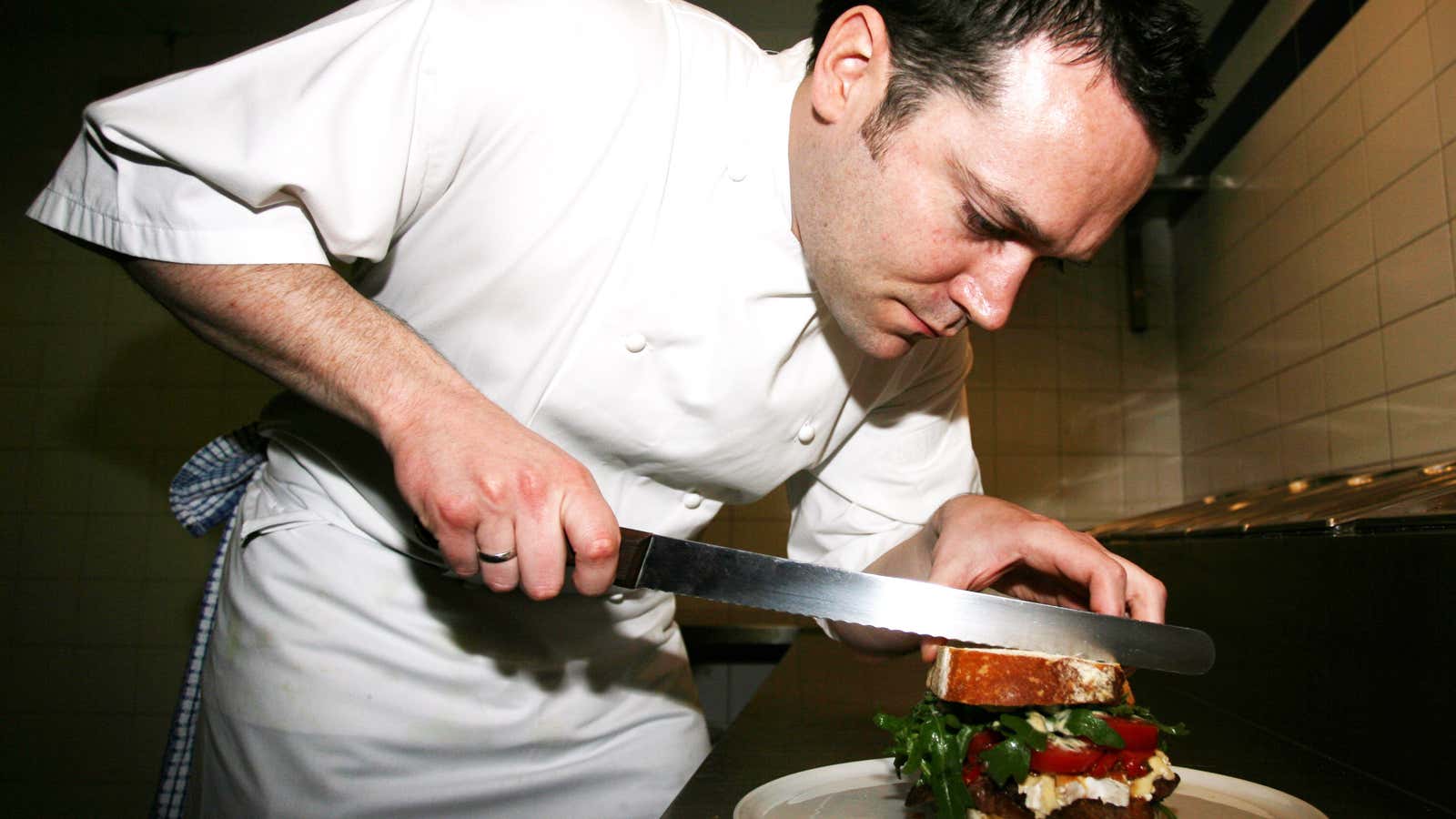The UK’s exit from the European Union is a high-stakes endeavor for British sandwich lovers— and there are a lot of them.
The specter of Brexit is already playing out on the world stage, from prime minister Theresa May’s volatile government to the risk that entire businesses will become illegal overnight. But these mammoth problems aside, Brits might soon taste the consequences for themselves, in the form of homegrown bread without much in between.
The convenient lunch-time snack invented by the Earl of Sandwich seems simple enough, but new research from Politico shows how it relies on a complex supply chain of European imports. For instance, the UK imports most of its ham, largely from Germany and Denmark. According to Dairy Industry Ireland, Britain bought 78,000 tons of Irish cheddar in 2016, which counts for 82% of cheese imports. The chart below shows just how much of the typical British sandwich comes from abroad.
The most British thing about the 4 billion sandwiches that Brits purchase from supermarkets each year is, more likely than not, the bread. Last week, Jim Winship, director of the British Sandwich Association, was mocked for pointing out Brexit’s threat to BLT sandwiches. And while it is unlikely that produce will completely run dry, the risks of a disrupted sandwich supply chain are looking very real.
To make matters worse, a scorching European heatwave is boosting wheat prices. In the meantime, maybe it’s best to get used to eating sandwiches without meat, cheese, or fresh veggies. An untoasted roll slathered in butter and stuffed with fries (a quintessential British snack known as the chip butty) will have to do for now.
